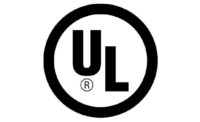Green buildings and human health

 Posted on the NIOSH web site June 10th, 2013 1:25 pm ET
Posted on the NIOSH web site June 10th, 2013 1:25 pm ET
Earlier this year I participated in the U.S. Green Building Council (USGBC) Summit on Green Buildings and Human Health. At USGBC’s invitation, I authored a blog that appears on their website. We are co-posting the blog on the NIOSH Science Blog. The Summit was very successful, and USGBC is open to including worker issues into their initiatives. Please share your thoughts on this important issue in the comment section below.
Tackling the many challenges of making the construction and occupation of commercial and residential buildings in the United States green and sustainable is not an easy one, but theU.S. Green Building Council (USGBC) is to be congratulated for working aggressively to address them. Championing commitments to environmental sustainability, energy reduction, social equity, and human health demonstrate the commitment of the USGBC to take steps that will benefit both the environment and the businesses that construct, as well as occupy, these structures. LEED[1] has evolved over time on a trajectory towards true sustainability. USGBC is to be commended further for looking introspectively at how health is considered in LEED, and the relative priority given to energy and environmental factors.
Given LEED’s current focus on occupants and indoor air quality, it provides a strong foundation on which we can build. As we discussed at the Summit, health is a broad subject that includes a range of important topics like well-being and illness. Therefore, health is a good concept for helping to make LEED more inclusive.
For example, the health and safety of the workers who construct, maintain and clean buildings is a logical component of any comprehensive health approach. At the National Institute for Occupational Safety and Health (NIOSH) such a notion is clear to us. NIOSH is the federal agency responsible for conducting research and making recommendations for the prevention of occupational illness and injury in the United States.
Through its Construction Program, NIOSH develops, facilitates, and promotes innovative workplace safety and health practices for workers in the building trades.
NIOSH also has a Prevention through Design (PtD) national initiative, which addresses design-related occupational injuries and illnesses by encouraging the elimination of hazards and minimizing risks to workers across all industry sectors and settings. PtD examines the potential for hazards throughout the life cycle of work premises, tools, equipment, machinery, substances, and worker processes. This includes their construction, manufacture, use, maintenance, and ultimate disposal or reuse.
Together, the NIOSH Construction and PtD programs collaborate on efforts to increase the use of design interventions to address safety and health hazards early in the pre-design and design processes in the construction sector. Based on the discussions during the Summit, we think that these same elements will resonate with USGBC and its stakeholders.
The USGBC’s Summit on Green Building and Human Health was a bold and thought-provoking opportunity to engage a wide variety of stakeholders on the topics of green buildings and how humans interact with them. I was pleased by the reception given to the concept of including worker safety and health as part of a broader view of health. While for some participants it was a population that was in mind already, for others it was a new one on which to focus. The welcoming attitude at the Summit of worker safety and health was refreshing, and helped in making for fruitful discussions on the effect of green building on human health. USGBC is on a good course, and I look forward to the additional collaboration that is likely to come. This latest effort is making “sustainability” a more inclusive and meaningful term.
Looking for a reprint of this article?
From high-res PDFs to custom plaques, order your copy today!






